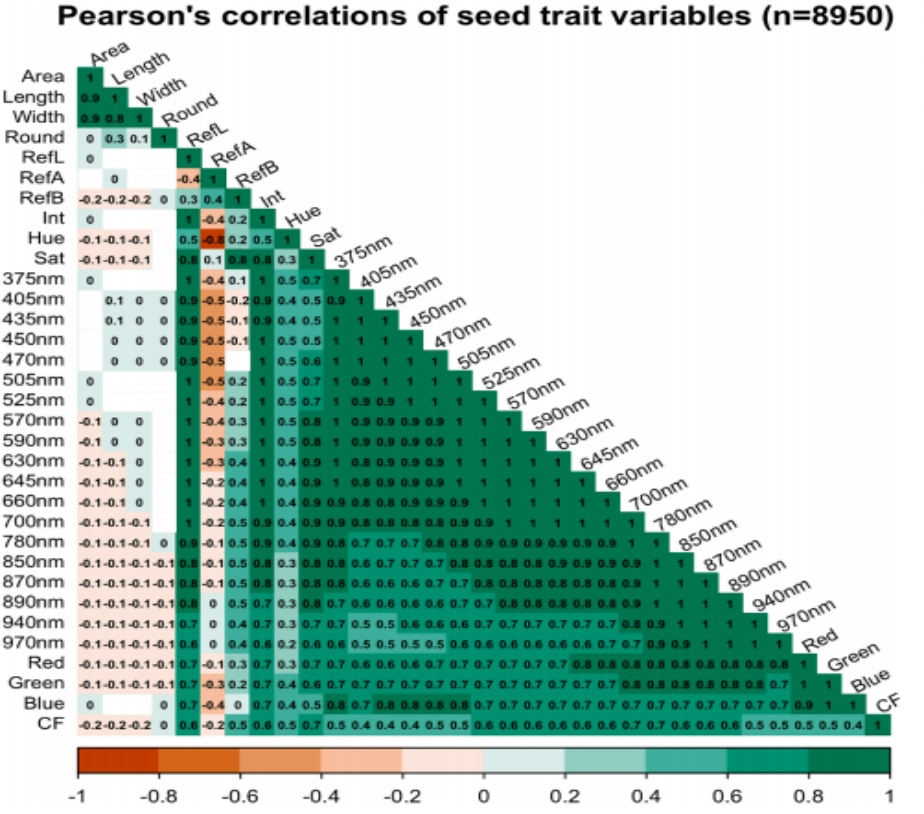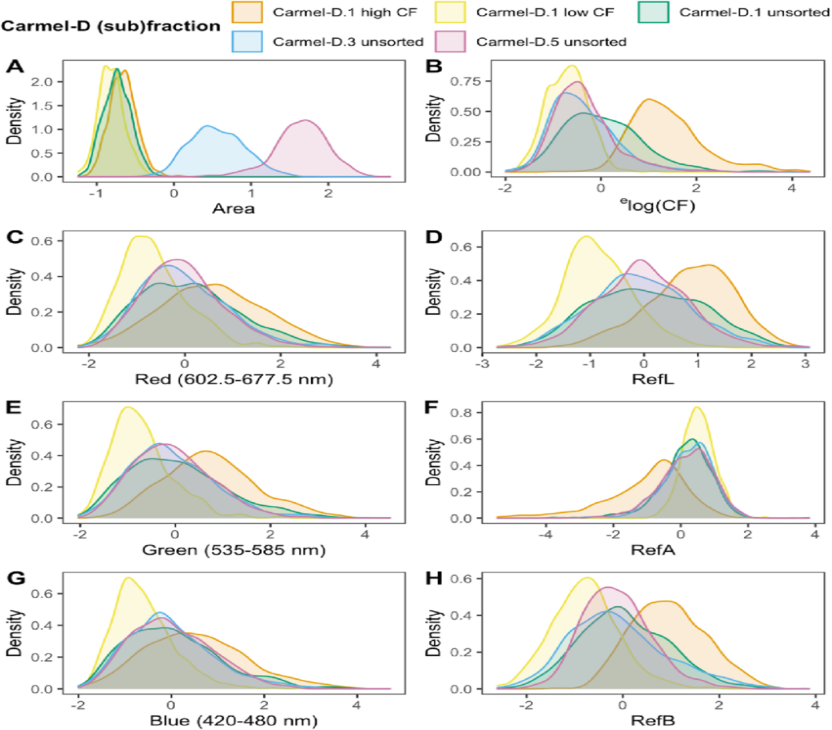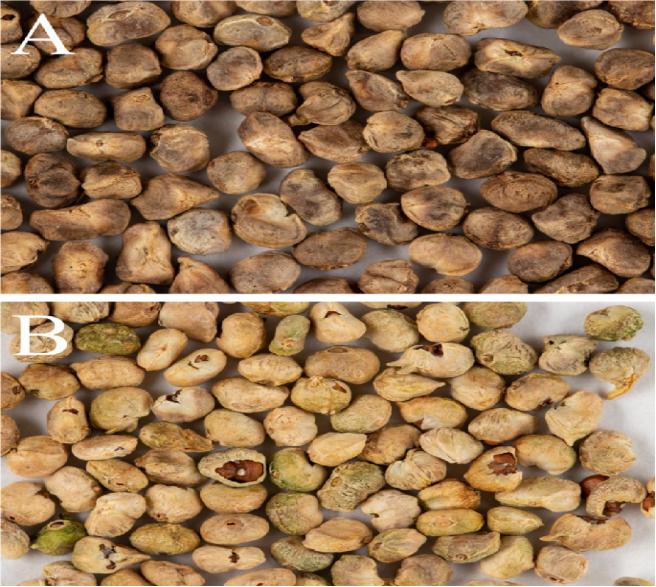品质至上,客户至上,您的满意就是我们的目标
当前位置: 首页 > 新闻动态
科学家利用Videometer多光谱成像系统发表菠菜表型与耐阻尼性关系
发表时间: 点击:714
来源:北京博普特科技有限公司
分享:
来自瓦赫宁根的科学家利用Videometer多光谱成像系统在期刊Scientia Horticulturae 发表了题为”Higher seed maturity levels, darker pericarp, and smaller seed size relate to improved damping-off tolerance in spinach”的文章。目前利用该系统发表的文章已经接近400篇。
摘要
随着对幼叶菠菜(Spinacia oleracea L.)的需求不断增长以及对化学种子处理的日益禁止措施,抑制病害的问题变得更加明显。腐霉病已被证明是菠菜最常见的抑制病原体。先前的研究表明,菠菜品种的种子批次在出苗前的阻尼耐受水平上存在很大差异,这与出苗率无关。在这项研究中,我们分析了个体种子活力相关的性状,如种子大小和成熟度,是否会影响种子对最终P. ultimum发病前感染的耐受性。在单个种子的水平上测量相同种子批次的种子的形态和多光谱特性。在不同的最终磷剂量下评估这些单独种子的幼苗出苗情况,对于每个单独的种子,其特征与其出苗成功率相关。结果表明,相对较高水平的叶绿素荧光(种子成熟度较低的指标)与出苗成功率呈负相关。随着P.ultimatum剂量的增加,种子大小和果皮的光反射率,特别是在紫蓝光下,与出苗呈越来越负的关系。这表明,较小的种子和光反射较少(紫蓝色)的种子对最后一代P.ultimum的感染更具耐受性。一项对单个种子批次的种子大小和成熟度分数(不包括潜在的基因型和种子生产效应)的验证研究证实,种子成熟度与与幼苗出苗呈正相关,而种子大小与最终P.ultium存在下的出苗呈负相关。种子大小和光反射系数在不同种子批次间对最后一种的耐受性变化中占很小的部分。建议选择光反射率相对较低(果皮较暗)的最成熟种子或尺寸较小的成熟种子,以获得具有提高的出苗前阻尼耐受水平的种子批次。
关键词:叶绿素荧光 抑制 多光谱成像光反射率 腐霉 种子质量



Higher seed maturity levels, darker pericarp, and smaller seed size relate to improved damping-off tolerance in spinach
Abstract
With the growing demand for baby-leaf spinach (Spinacia oleracea L.) and an increasing ban on chemical seed treatments, problems of damping-off diseases become more apparent. Pythium ultimum has been shown to be the most common damping-off pathogen of spinach. Previous studies showed a large variation in pre-emergence damping-off tolerance levels among seed lots of spinach cultivars, which did not correlate with the rate of seedling emergence. In this study, we analysed if individual seed vigor-related traits, such as seed size and maturity, can influence seed tolerance towards pre-emergence infection by P. ultimum. Seeds of the same seed lots were measured for their morphological and multispectral properties on the level of a single seed. The seedling emergence from those individual seeds was assessed at different P. ultimum doses and for each individual seed, the characteristics were correlated with its emergence success. The results showed that relatively higher levels of chlorophyll fluorescence, an indicator of lesser seed maturity, had a negative association with emergence success. With increasing P. ultimum dose, the seed size and light reflectance from the pericarp, particularly with violet-blue light, showed an increasingly negative association with emergence. This indicated that smaller seeds and seeds that reflected less (violet-blue) light were more tolerant towards P. ultimum infection. A validation study with seed size and maturity fractions of a single seed lot (excluding potential genotypic and seed production effects) confirmed that seed maturity had a positive association with seedling emergence, and that seed size had a negative association with the emergence in the presence of P. ultimum. Seed size and light reflectance accounted for a small part of the variation in P. ultimum tolerance among the seed lots. Selecting the most mature seeds with relatively less light reflectance (darker pericarp) or mature seeds with smaller sizes is recommended to obtain seed lots with improved pre-emergence damping-off tolerance levels.
Key words:Chlorophyll fluorescence Damping off Multispectral imaging Light reflectance Pythium ultimum Spinacia oleracea Seed quality